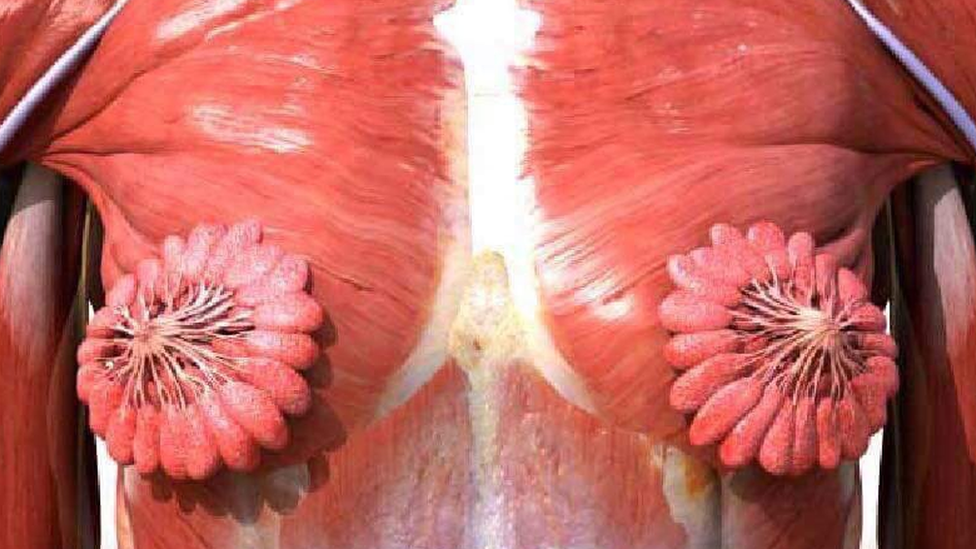Why are trypophobics scared of crumpets?
- Published

Gemma Perkins says both she and her mum "always get a bit creeped out by skin rashes"
This article contains images that may be uncomfortable for trypophobics. For a version without those pictures, click here.
"Crumpets have never been allowed in my household," says Gemma Perkins, from Dudley.
The 32-year-old graphic designer has trypophobia - a fear of repetitive patterns of holes.
And she is far from alone: scientists estimate that the condition affects around 15% of the population. Yet many people have never heard of it.
"It makes my skin crawl," says Gemma, explaining the uncontrollable reaction when she sees anything with tightly-packed holes or bumps in a pattern.
She gets nauseous - sometimes heaving at the sight of holes - and has recurring nightmares of holes appearing in her skin and face.
It is not just crumpets which trigger the reaction, although she says they are her first memory of having trypophobia.
She is similarly averse to objects such as sponges or pumice stones as well as things with bubbles or bumps, such as skin rashes.
"I cooked an omelette last night and there were too many holes in it," she says. "I couldn't eat it. I love omelettes but now I'm wondering whether I can eat another omelette again. I sometimes cook pancakes but I have to look away.
"I can laugh about it because it's not debilitating," she adds. "It's just a ridiculous thing. It's more day-to-day inconvenience."

Eating crumpets was also the first time Beth Cruse, from Bristol, noticed she was trypophobic at the age of 14.
Now 21, university student Beth says she would not choose to eat a crumpet but "wouldn't be completely repulsed" if she saw one.

"It's as severe as arachnophobia," says Cardiff University student Beth
Among the things she cannot look at are honeycomb, the tiny holes in a car speaker and little holes in the wall of old stone buildings. Recently, her trypophobia was triggered by a viral internet picture which appeared to show human breast tissue.

Many people said they felt creeped out by the image
"It makes your skin crawl," she says. "It's like an internal feeling of 'Oh my god, there's something hollow inside of that you want to rip it out.'
"You get kind of itchy.... my hands start to get sweaty."
Student Bekki Chance, 17, from Worcester, also experiences the phenomenon - she cannot look at strawberries or some flowers and in biology class at school was not able to look at pictures of cells.
"It makes you feel like gross inside and really sick," she says.

Student Bekki says she has been trypophobic since "forever" and experiences it with oval shapes or circles
Vision scientist Dr Geoff Cole, at the University of Essex, was part of the first full scientific study of trypophobia, working with his colleague, Professor Arnold Wilkins.
Dr Cole also has a personal interest in the research: he has the phobia. He made the discovery aged 13 in a school metalwork class, when he felt nauseous at the sight of holes drilled into a 10 pence piece.
Now, Dr Cole says he is "kind of cured" because he has spent so much time looking at the images for his work.
And interestingly, he thinks everybody is trypophobic to some extent - and that somebody without the condition can still appreciate why someone might prefer not to look at a trypophobic image.

Prof Wilkins (l) and Dr Cole found trypophobia was triggered by images in the brain which featured "high contrast at mid-range spatial frequencies"
"We have all got it, it's just a matter of degree," says Dr Cole.
For those who have the condition, the response can be extreme. Dr Cole and Prof Wilkins reported testimonies from some people who vomited and others who said they could not go to work for several days.
"It can be quite disabling," Prof Wilkins says.
According to a separate paper published in February 2018,, external one patient experienced symptoms including nausea, increased heart and breathing rate, choking, sweating and agitation. The fear could be sparked by seeing sliced or seed-covered bread, Gruyère cheese or clothes with polka dots.
Why does trypophobia exist?
In their research, Dr Cole and Prof Wilkins tested hundreds of people, showing them a picture of a lotus seed pod - a classic trigger for trypophobics - and asked whether it was uncomfortable to look at.

The holes in lotus seed pods spark discomfort in some people with trypophobia
From the study, Dr Cole says he thinks around 15% of people have the condition.
The academics also found found trypophobic images - or clusters of holes - had a unique visual property not usually seen in the natural world.
Among the few things in nature which do have hole clusters are certain poisonous animals. So one theory about why some people feel averse to holes is that an ancient part of the brain could be warning of this danger.

Blue poison dart frogs, for example, have markings which share the visual characteristics of trypophobic images
Other studies have also been published more recently and another theory has emerged. Rather than a fear of dangerous poisonous animals, trypophobia could be based on disgust at skin disease.
"Originally we thought it was danger because it's similar to that of poisonous animals," Prof Wilkins says. "But now it looks more it's more disgust than fear.
"So it's still undecided. It's probably a bit of both."
- Published26 April 2019

- Published30 December 2013

- Published6 February 2017
